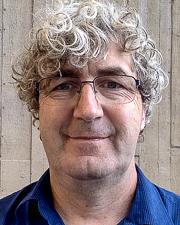Nuclear Physics
We are the KU Nuclear Physics group, and we are fascinated by the strong force that binds protons and nuclei together. We want to unravel the secrets of matter and energy at their most fundamental level, and discover new phenomena that challenge our understanding of nature. We work with scientists from all over the world to operate the ALICE and CMS detectors at the CERN Large Hadron Collider, the most powerful particle accelerator ever built. There, we smash protons and nuclei at near-light speed, and observe the traces of particles that emerge from the collisions. We also investigate rare events where two heavy nuclei barely touch each other at very high energies, creating intense electromagnetic fields. We study these phenomena to learn more about the properties of matter and light in extreme conditions. We also join the EPIC project, which will build a new Electron-Ion Collider at Brookhaven National Laboratory. This machine will fire electrons at protons and nuclei, and reveal their inner structure and dynamics.
We are at the forefront of nuclear physics research, creating new technologies for the ALICE, CMS and EPIC experiments. We have cutting-edge labs at both KU and CERN, where we design and test novel devices and methods for studying the fundamental nature of matter and energy. Some of our inventions have also been applied to other fields, such as medicine and space science, where they help improve human health and exploration.
If you are passionate about nuclear physics and want to join our exciting research projects, we have plenty of opportunities for you. Whether you are an undergraduate or a graduate student, you can work with us as a research assistant, a lab technician, or as a collaborator. You will gain valuable experience and skills in experimental and theoretical nuclear physics, as well as in interdisciplinary fields.
Our group has been funded by prestigious grants from the U.S. Department of Energy, Office of Science (DOE), the National Science Foundation (NSF), the National Institutes of Health (NIH), and the National Aeronautics and Space Administration (NASA).






